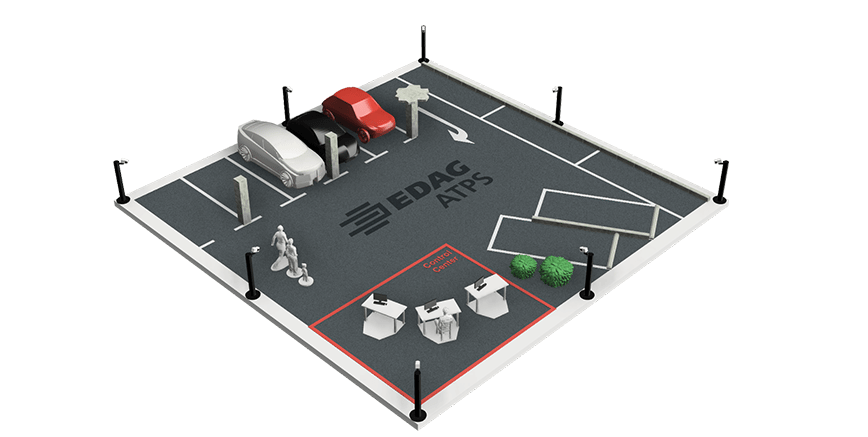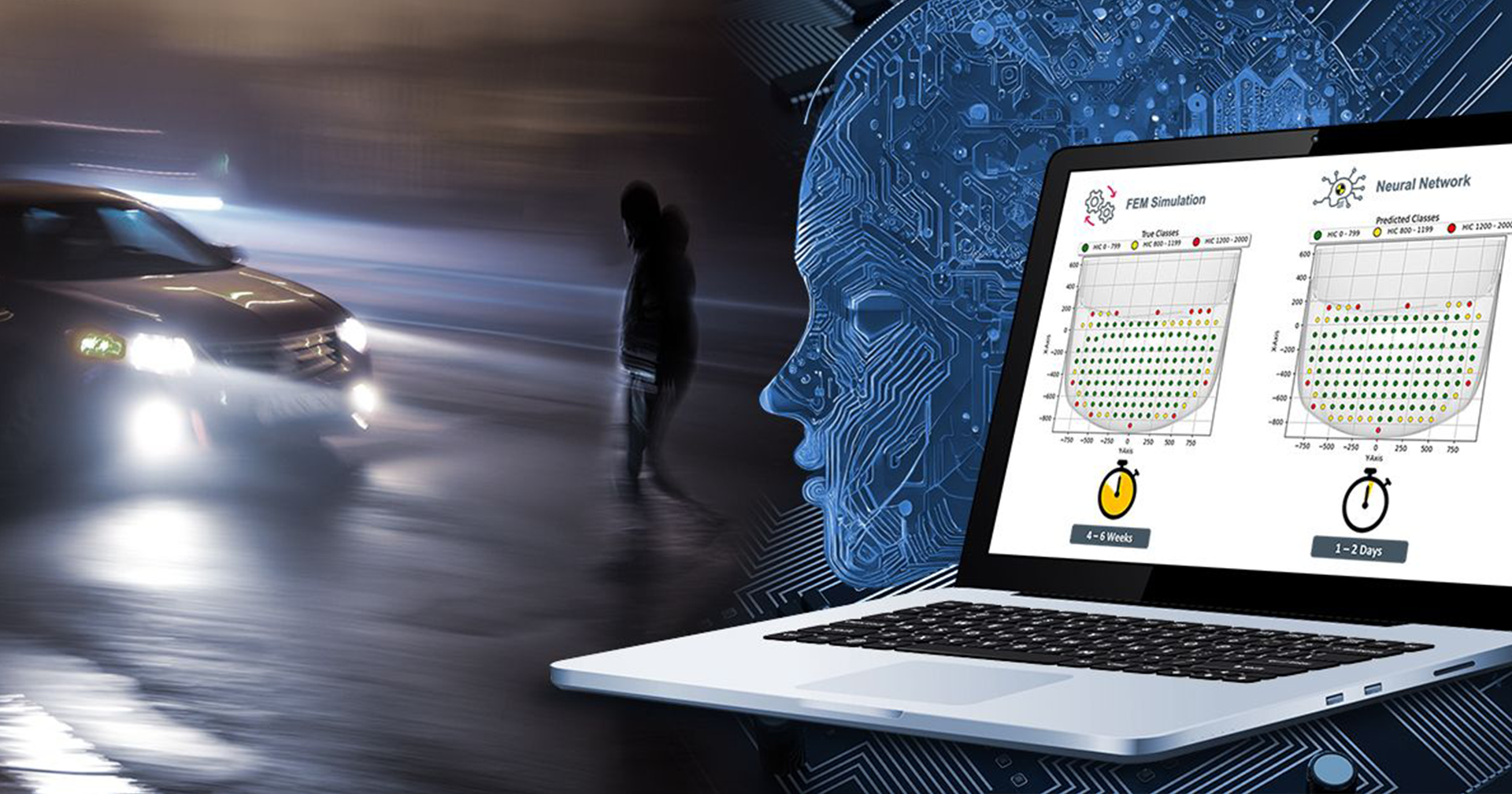A parking assistance system really comes into its own when parking spaces are cramped and awkward. To ensure that the assistant will not simply shut down or drive back and forth dozens of times, the systems need to be validated and optimized in extensive test series. This takes time and money. EDAG has now come up with an alternative: the Automated Test Center for Parking Systems. With automated tests and precisely documented scenarios, it helps not only to speed up and increase the efficiency of development, but also to improve the quality of the parking assistant.
It will probably be another 20 years or so before fully automated vehicles – i.e. vehicles requiring no human intervention – will be traveling on our roads. Level 4 autonomous driving still has a number of development steps to go for hardware, software and AI methods before it is suitable for mass use.
Although we still have a long way to go, the first results of this gradual development can already be seen and utilized. As a consequence, vehicles have more and more advanced driver assistance systems (ADAS) offering safety and comfort functions. They can help the driver to keep in lane and avoid collisions, but also steer the car into a parking bay without human input. Such assistance functions at SAE levels 1 and 2 are already established in numerous buyer groups, according to PwC's Digital Auto Report 2023. The report shows that 50 percent of the people questioned rated traffic jam and parking assistants as important on-demand functions – and the approval ratings are growing rapidly. They therefore offer a welcome chance to set oneself apart from the competition – but only if they work reliably and do not add excessively to the price of the car.
This makes it even more important to take a leading position with regard to cost, quality, and also time to market. The question of safety is also of major importance, since ultimately, this is what the acceptance of vehicle functions at higher levels of autonomy depends on.
Complex development processes
Consequently, the requirements for this kind of parking assistant are stringent. The identification of obstacles in particular is extremely challenging, as is the question of how the parking space is to be defined in the first place. Walls in parking garages, plant containers, billboards and other elements of street architecture are the easiest tasks here. Things become more difficult when it comes to curbstones, for example, with their different heights, colors and shapes. And last but not least, anything that moves or can be moved.
This makes the development of a high-quality parking assistant both time-consuming and cost-intensive. Extensive test series in which various scenarios are tested form part of the process. To begin with, the parking test locations need to be defined and set up. The results measured serve as the basis for the next optimization loop. If control software and data processing algorithms have been revised, the performance of the parking assistant is revalidated.
Or the developers come to the conclusion that the data supplied is inadequate and request new tests to obtain additional measurement data. To this end, the original scenarios must be reproduced as accurately as possible on the basis of precise documentation. These optimization loops are repeated until acceptable results are achieved.
The more loops that are run and the larger the number of different scenarios forming the basis of the tests, the higher the quality of the parking assistant will ultimately be. However, this also means a rapid increase in development costs. Searching for and setting up the scenarios is extremely time-consuming, as is the documentation, especially where complex situations are concerned.
Automated tests as an alternative
The automated test center for parking systems (ATPS) developed by EDAG is one way out of this dilemma. The first test center of this type is being built in southern Germany. A concept phase for this center has been in progress since June 2023, and is to be followed by the test and pilot phase in the coming months. The aim is for the ATPS to cover more than 90 percent of all known test scenarios in the initial stage. There are plans for further sites throughout the world in the near future.
As the automated test centers are modular in design, they can be set up for different levels of automation. In the medium term, further options for complicated driving situations, on slopes or unusual surfaces for instance, are to be added. What is more, the test centers are suitable for more than just parking tests; they can also be put to universal use, for pre-development, for example, or approval recommendations.
One of the primary advantages of the ATPS is the documentation support it provides. All aspects of the test procedure undergo continuous and precise automated recording using LIDAR sensors, so that the type and position of neighboring vehicles, for example, or other obstacles which are being used, curbstones and so on can be monitored at all times. This makes it much easier for tests to be repeated and scenarios varied.
The test center is to be further automated in the next development stage. It will then be possible to set up a scenario "at the push of a button", as it were. To this end, any elements required, for instance pedestrian and vehicle dummies, curbstones, plant containers and anything else that might be needed are mounted on mobile platforms. From the control center, these can then be positioned with an accuracy of 2 to 5 cm. Provided the test vehicle meets the technical requirements, it can also be positioned by remote control. 
Last but not least, the performance of the automatic parking aid can be specifically checked in the ATPS. Automated positioning allows scenarios, target distances from the vehicle or curb height for instance, but also weather and lighting conditions, to be varied quickly and easily. This simplifies the search for limiting factors and functional stability limits.
Measurable successes
On the basis of a comprehensive analysis of all known test cases, EDAG has estimated the potential savings of its Automated Test Center for Parking Systems. The automatic positioning of limitations and obstacles produces potential savings of up to 50 percent, and for remote-controlled vehicles, 75 percent.
Are you also working on a parking assistant, either on a new development or in a process of continuous adaptation and optimization? If you have any questions on the EDAG Test Center, please contact our expert David Münzing, Portfolio Manager for Advanced Driver Assistance Systems (ADAS). Further details of the additional values and the efficiency steps that can be achieved can be found in our white paper "Automation Accelerates the Development of Parking Assistants", which is available for download here. 





